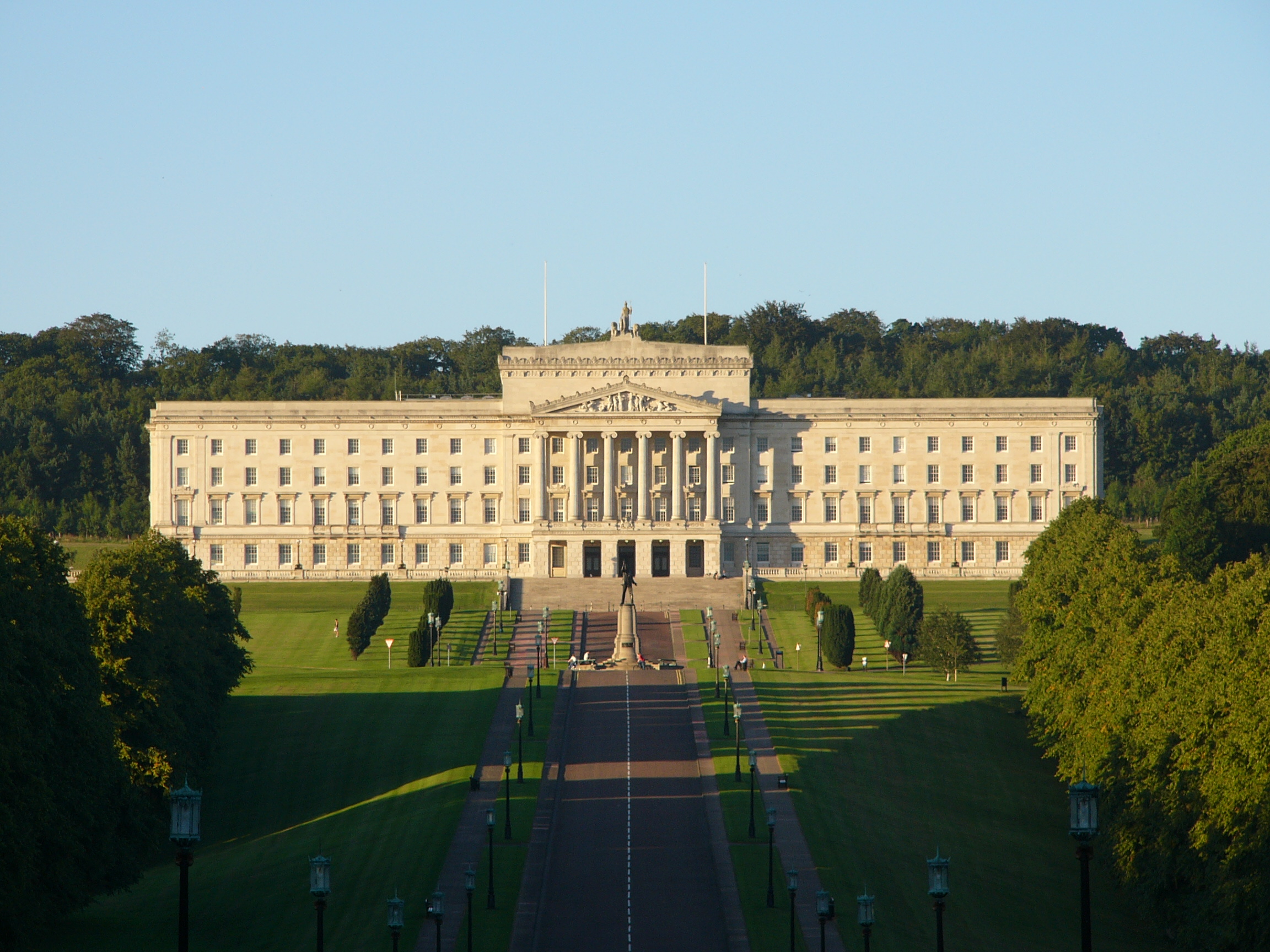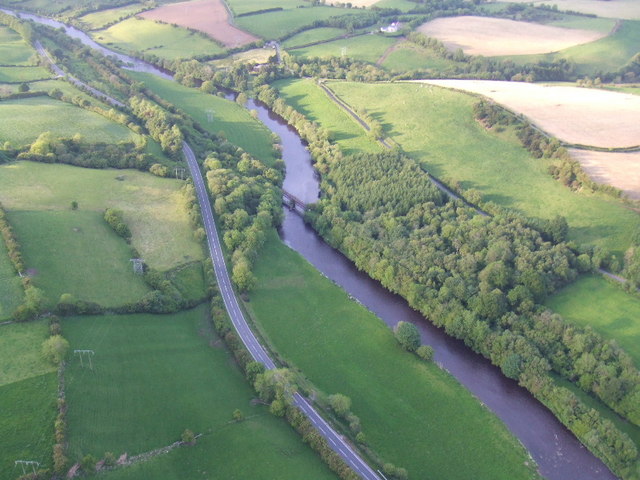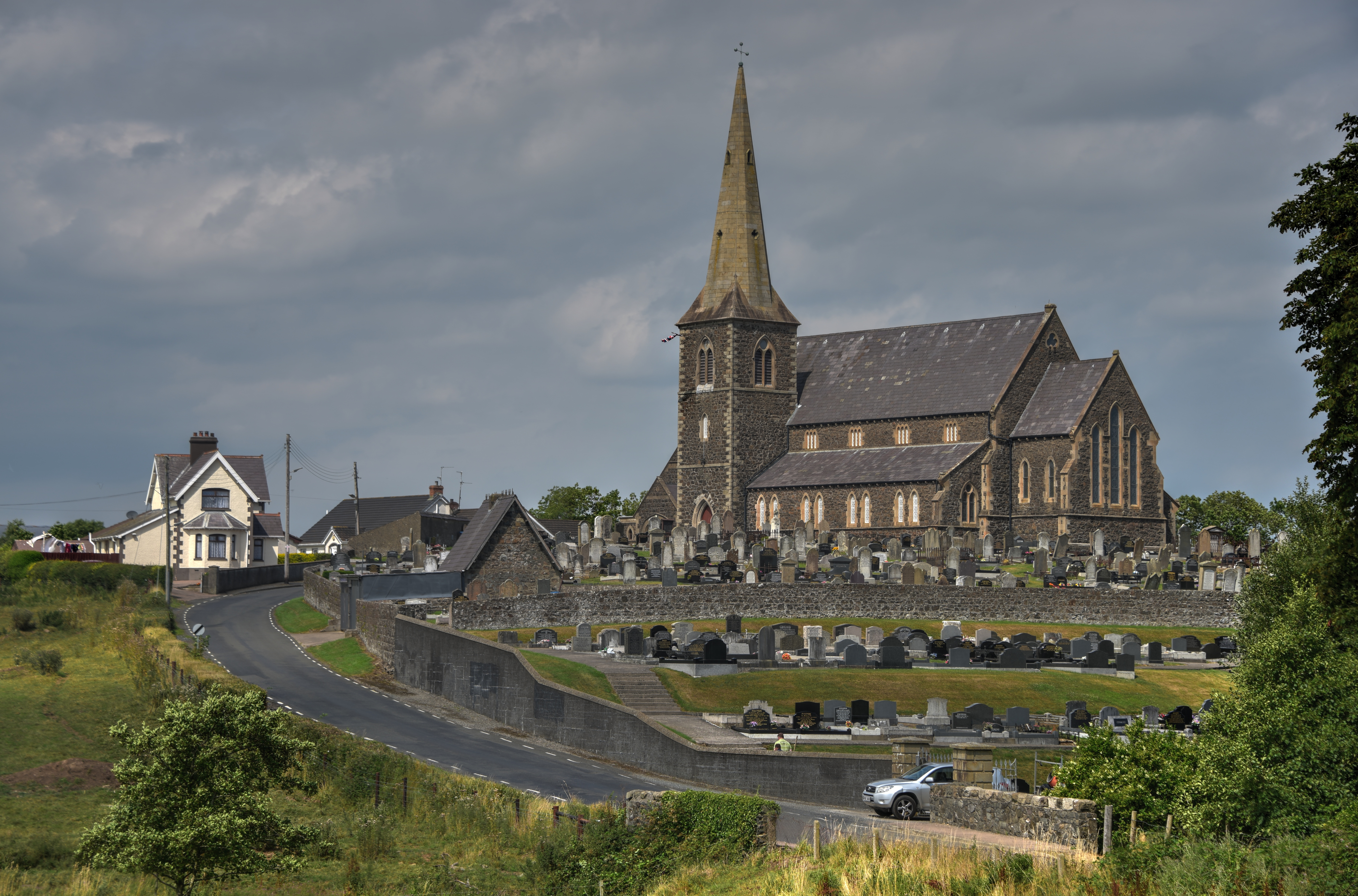|
1998 In Northern Ireland
Events during the year 1998 in Northern Ireland. Incumbents * First Minister - David Trimble (from 1 July) * deputy First Minister - Seamus Mallon (from 1 July) * Secretary of State - Mo Mowlam Events *9 January - British Secretary of State for Northern Ireland, Mo Mowlam, visits loyalist prisoners in the Maze prison. Afterward loyalists agree to attend the Stormont talks. *20 February - Sinn Féin is excluded from the Northern Ireland talks for two weeks. Protests in Belfast follow. *10 April (Good Friday) - The British and Irish governments and all the political parties in the Northern Ireland (except the Democratic Unionist Party) sign the Belfast Agreement. *19 May - John Hume and David Trimble join U2 on stage in Belfast as they make a direct appeal to young voters in Northern Ireland to vote 'yes' in the referendum on the Good Friday Agreement. *22 May - The Belfast Agreement is endorsed in a referendum by people north and south of the border. *25 June - The people of N ... [...More Info...] [...Related Items...] OR: [Wikipedia] [Google] [Baidu] |
Northern Ireland
Northern Ireland ( ; ) is a Countries of the United Kingdom, part of the United Kingdom in the north-east of the island of Ireland. It has been #Descriptions, variously described as a country, province or region. Northern Ireland shares Republic of Ireland–United Kingdom border, an open border to the south and west with the Republic of Ireland. At the 2021 United Kingdom census, 2021 census, its population was 1,903,175, making up around 3% of the Demographics of the United Kingdom#Population, UK's population and 27% of the population on the island of Ireland#Demographics, Ireland. The Northern Ireland Assembly, established by the Northern Ireland Act 1998, holds responsibility for a range of Devolution, devolved policy matters, while other areas are reserved for the Government of the United Kingdom, UK Government. The government of Northern Ireland cooperates with the government of Ireland in several areas under the terms of the Good Friday Agreement. The Republic of Ireland ... [...More Info...] [...Related Items...] OR: [Wikipedia] [Google] [Baidu] |
Good Friday Agreement
The Good Friday Agreement (GFA) or Belfast Agreement ( or ; or ) is a pair of agreements signed on 10 April (Good Friday) 1998 that ended most of the violence of the Troubles, an ethno-nationalist conflict in Northern Ireland since the late 1960s. It was a major development in the Northern Ireland peace process of the 1990s. It is made up of the Multi-Party Agreement between most of Northern Ireland's political parties, and the BritishIrish Agreement between the British and Irish governments. Northern Ireland's present devolved system of government is based on the agreement. Issues relating to sovereignty, governance, discrimination, military and paramilitary groups, justice and policing were central to the agreement. It restored self-government to Northern Ireland on the basis of " power sharing" and it included acceptance of the principle of consent, commitment to civil and political rights, cultural parity of esteem, police reform, paramilitary disarmament and e ... [...More Info...] [...Related Items...] OR: [Wikipedia] [Google] [Baidu] |
County Tyrone
County Tyrone (; ) is one of the six counties of Northern Ireland, one of the nine counties of Ulster and one of the thirty-two traditional counties of Ireland. Its county town is Omagh. Adjoined to the south-west shore of Lough Neagh, the county covers an area of , making it the largest of Northern Ireland's six counties by size, and the second largest county in Ulster after Donegal. With a population of 188,383 as of the 2021 census, Tyrone is the 5th most populous county in both Northern Ireland and Ulster, and the 11th most populous county on the island of Ireland. The county derives its name and general geographic location from Tír Eoghain, a Gaelic kingdom under the O'Neill dynasty which existed until the 17th century. Name The name ''Tyrone'' is derived from the Irish , meaning 'land of Eoghan', the name given to the conquests made by the from the provinces of and Ulaid. Historically, it was anglicised as ''Tirowen'' or ''Tyrowen'', which are closer to the Irish ... [...More Info...] [...Related Items...] OR: [Wikipedia] [Google] [Baidu] |
Omagh
Omagh (; from , meaning 'the virgin plain') is the county town of County Tyrone, Northern Ireland. It is situated where the rivers River Drumragh, Drumragh and Camowen River, Camowen meet to form the River Strule, Strule. Northern Ireland's capital city, Belfast, is 68 miles (109.5 km) to the east of Omagh, and Derry is 34 miles (55 km) to the north. The town had a population of 20,458 at the 2021 United Kingdom census, 2021 census. At the time of 2011 census, the former Omagh District Council, district council, which was the largest in County Tyrone, had a population of 51,356. Omagh contains the headquarters of the Western Education and Library Board, and also houses offices for the Department of Agriculture, Environment and Rural Affairs at Sperrin House, the Department for Infrastructure (Northern Ireland), Department for Infrastructure and the Roads Service, Northern Ireland Roads Service at the Tyrone County Hall and the Department of Finance and Personnel, Nor ... [...More Info...] [...Related Items...] OR: [Wikipedia] [Google] [Baidu] |
Omagh Bombing
The Omagh bombing was a car bombing on 15 August 1998 in the town of Omagh in County Tyrone, Northern Ireland. It was carried out by the Real Irish Republican Army (Real IRA), a Provisional Irish Republican Army (IRA) splinter group who opposed the IRA's ceasefire and the Good Friday Agreement, signed earlier in the year. The bombing killed 29 people and injured about 220 others, making it the deadliest incident of the Troubles in Northern Ireland, and the second deadliest incident of the conflict overall. Telephoned warnings which did not specify the location had been sent almost forty minutes beforehand, and police inadvertently moved people toward the bomb. The bombing caused outrage both locally and internationally, spurred on the Northern Ireland peace process, and dealt a severe blow to the dissident Irish republican campaign. The Real IRA denied that the bomb was intended to kill civilians and apologised; shortly after, the group declared a ceasefire. The victims i ... [...More Info...] [...Related Items...] OR: [Wikipedia] [Google] [Baidu] |
Ballymoney
Ballymoney ( , meaning 'townland of the moor') is a town and Civil parishes in Ireland, civil parish in County Antrim, Northern Ireland. It is within the Causeway Coast and Glens Borough Council area. The civil parish of Ballymoney is situated in the historic Barony (geographic), baronies of Dunluce Upper and Kilconway in County Antrim, as well as the barony of North East Liberties of Coleraine in County Londonderry. It had a population of 11,048 people at the 2021 United Kingdom census, 2021 census. Ballymoney is located on the A26 road (Northern Ireland), main road between Coleraine and Ballymena, with good road and rail connections to the main cities in Northern Ireland, Belfast and Derry. The Ballymoney area has the highest life expectancy of any area in Northern Ireland, with the average male life expectancy at birth being 79.9 years and 83.8 years for females in years between 2010 and 2012. Conversely, it was revealed in 2013 that Ballymoney residents are more likely to ... [...More Info...] [...Related Items...] OR: [Wikipedia] [Google] [Baidu] |
Ulster Volunteer Force
The Ulster Volunteer Force (UVF) is an Ulster loyalism, Ulster loyalist paramilitary group based in Northern Ireland. Formed in 1965, it first emerged in 1966. Its first leader was Gusty Spence, a former Royal Ulster Rifles soldier from Northern Ireland. The group undertook Timeline of Ulster Volunteer Force actions, an armed campaign of almost thirty years during The Troubles. It declared a ceasefire in 1994 and officially ended its campaign in 2007, although some of its members have continued to engage in violence and criminal activities. The group is a proscribed organisation and is on the List of designated terrorist organizations, terrorist organisation list of the United Kingdom. The UVF's declared goals were to combat Irish republicanism, Irish republican paramilitaries – particularly the Provisional Irish Republican Army (IRA) – and to maintain Northern Ireland's status as part of the United Kingdom. It was responsible for more than 500 deaths. The vast majority (m ... [...More Info...] [...Related Items...] OR: [Wikipedia] [Google] [Baidu] |
Drumcree Conflict
The Drumcree conflict or Drumcree standoff is a dispute over yearly Parades in Northern Ireland, parades in the town of Portadown, Northern Ireland. The town is mainly Ulster Protestants, Protestant and hosts numerous Protestant marches each summer, but has a significant Irish Catholics, Catholic minority. The Orange Order insists that it should be allowed to Orange walk, march its traditional route to and from Drumcree Church on the Sunday before the The Twelfth, Twelfth of July. However, most of this route is through the mainly Catholic/Irish nationalism, Irish nationalist part of town. The residents, who see the march as sectarianism, sectarian, triumphalist and supremacism, supremacist, have sought to ban it from their area. There has been intermittent violence over the march since the 1800s. The outbreak of the Troubles led to the dispute intensifying in the 1970s and 1980s. At this time, the most contentious part of the route was the outward leg along Obins Street. After ... [...More Info...] [...Related Items...] OR: [Wikipedia] [Google] [Baidu] |
Reg Empey
Reginald Norman Morgan Empey, Baron Empey, (born 26 October 1947), best known as Reg Empey, is a Northern Irish politician who served as the acting First Minister of Northern Ireland in 2001. He was the Leader of the Ulster Unionist Party, leader of the Ulster Unionist Party (UUP) from 2005 Ulster Unionist Party leadership election, 2005 to 2010 Ulster Unionist Party leadership election, 2010 and served as chairman of the party from 2012 to 2019. Empey was a Member of the Legislative Assembly (Northern Ireland), Member of the Northern Ireland Assembly (MLA) for Belfast East (Assembly constituency), East Belfast from 1998 Northern Ireland Assembly election, 1998 to 2011 Northern Ireland Assembly election, 2011. Early life and career Reg Empey was born in West Belfast on 26 October 1947. His family were retailers, and his uncle was Stormont Ulster Unionist MP Joseph Morgan (politician), Joseph Morgan. Empey attended Hillcrest Preparatory School, Belfast, and The Royal School, Arm ... [...More Info...] [...Related Items...] OR: [Wikipedia] [Google] [Baidu] |
Northern Ireland Assembly
The Northern Ireland Assembly (; ), often referred to by the metonym ''Stormont'', is the devolved unicameral legislature of Northern Ireland. It has power to legislate in a wide range of areas that are not explicitly reserved to the Parliament of the United Kingdom, and to appoint the Northern Ireland Executive. It sits at Parliament Buildings at Stormont in Belfast. The Assembly is a unicameral, democratically elected body comprising 90 members known as members of the Legislative Assembly (MLAs). Members are elected under the single transferable vote form of proportional representation (STV-PR). In turn, the Assembly selects most of the ministers of the Northern Ireland Executive using the principle of power-sharing under the D'Hondt method to ensure that Northern Ireland's largest voting blocs, British unionists and Irish nationalists, both participate in governing the region. The Assembly's standing orders allow for certain contentious motions to require a cross ... [...More Info...] [...Related Items...] OR: [Wikipedia] [Google] [Baidu] |
Crumlin Road Courthouse
The Crumlin Road Courthouse is a former judicial facility on Crumlin Road in Belfast, Northern Ireland. It is a Grade B+ listed building. History The building, which was designed by the architect, Charles Lanyon, in the Neoclassical style, was completed in 1850. It was built just across the road from the Crumlin Road Gaol which had opened a few years earlier and to which it was connected by an underground passage. The design involved a symmetrical main frontage with fifteen bays facing onto Crumlin Road; the central section featured a hexastyle portico with Corinthian order columns supporting an entablature and a pediment containing the Royal coat of arms. A sculpture representing justice by William Boyton Kirk was installed at the apex of the pediment. The building was originally used as a facility for dispensing justice but, following the implementation of the Local Government (Ireland) Act 1898, which established county councils in every county, it also became the meeting ... [...More Info...] [...Related Items...] OR: [Wikipedia] [Google] [Baidu] |







